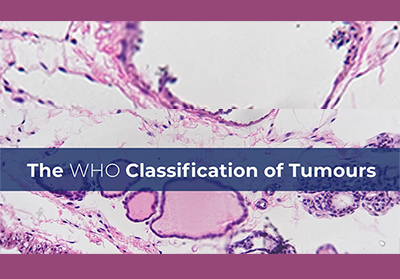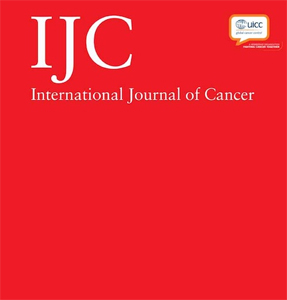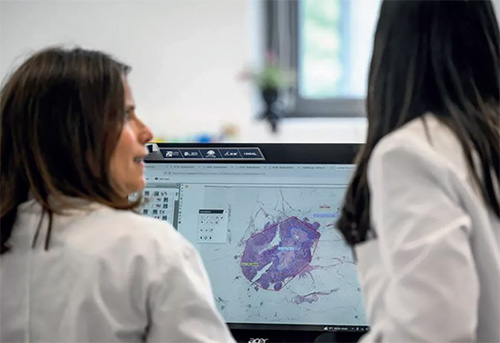Research
IARC Handbooks programme
- Global and regional variations and time trends in cancer incidence among and within populations suggest that a sizeable percentage of cancers are preventable. Cancer prevention builds on the identification and evidence-based evaluation of agents and interventions (including chemopreventive agents, personal interventions, cancer screening, and policy measures) that reduce the risk of developing cancer.
- Scientists worldwide conduct studies to determine which interventions can prevent cancer or reduce mortality from cancer. As this evidence accumulates, performing comprehensive reviews and evaluations of such evidence enables links to be established between interventions and reduced risks of cancer. Scientific information that is both authoritative and trusted can help governmental agencies and individuals understand complex scientific concepts and develop public actions to reduce an individual’s risk of developing cancer.
- The IARC Handbooks of Cancer Prevention critically review and evaluate the published scientific evidence on cancer-preventive measures that could be used in cancer control. These include interventions for primary prevention with pharmacological or immunological agents, foods, and behaviour changes (e.g. non-steroidal anti-inflammatory drugs, vitamin D, and increased physical activity), primary prevention through population-level policies (tobacco control, alcohol), as well as interventions for secondary prevention (e.g. screening for cancers of the cervix, breast, or colorectum).
Dr Béatrice Lauby-Secretan presents an overview of the IARC Handbooks of Cancer Prevention programme
- To achieve such evaluations, IARC convenes an international, interdisciplinary Working Group of expert scientists to develop each volume of the IARC Handbooks. IARC selects these experts based on their knowledge and experience and the absence of real or apparent conflicting interests. The Working Group conducts a critical review of the pertinent scientific literature and performs an evaluation of the potential of each agent or intervention to prevent cancer in humans. Agents and interventions are selected for evaluation based on (i) the feasibility of the intervention and (ii) the availability of some published scientific evidence of cancer-preventive effects.
- The objective is to achieve the highest degree of scientific authority and trust in these evaluations. National and international health agencies then use the IARC Handbooks to guide and support their actions for primary and secondary prevention.
IARC Monographs programme
- Variations and time trends in cancer incidence among and within populations suggest that many kinds of environmental factors contribute to the development of cancer. Evidence-based primary cancer prevention builds on the identification and evaluation of environmental causes of cancer (including chemicals, complex mixtures, physical agents, biological agents, occupational exposures, and other exposures of everyday life).
- Scientists worldwide conduct cancer epidemiology studies, cancer bioassays, and a wide variety of molecular and mechanistic studies to identify specific causes of cancer and to understand the mechanisms by which cancer develops. As this evidence accumulates, there is a need to systematically review and evaluate the data to establish links between exposure and increased risks of cancer. Scientific advice that is both authoritative and trusted can help governmental agencies and individuals to understand complex scientific information and to use it to protect the public from suspected hazards to human health and to reduce the global burden of cancer.
- The IARC Monographs on the Identification of Carcinogenic Hazards to Humans critically review and evaluate the published scientific evidence on carcinogenic hazards to which humans are exposed. These hazards include chemicals, complex mixtures, physical agents, biological agents, occupational exposures, and other exposures of everyday life.
- To achieve such evaluations, IARC convenes an international, interdisciplinary Working Group of expert scientists to develop each volume of the IARC Monographs. IARC selects these experts based on their knowledge and experience and the absence of conflicting interests. The Working Group writes a critical review of the pertinent scientific literature and an evaluation of the potential of each agent to cause cancer in humans. Agents are selected for evaluation based on (i) evidence of human exposure and (ii) some published scientific evidence of cancer-causing effects, which together combine into the potentially preventable cancer burden.
- National and international health agencies use the IARC Monographs to guide and support their actions to prevent exposure to agents that are carcinogenic, probably carcinogenic, and possibly carcinogenic to humans. Accordingly, an overarching objective is to achieve the highest degree of scientific authority and trust in these evaluations.
WHO Classification of Tumours programme
- Cancer classification has previously been based on consensus histopathological opinion, with limited molecular input. However, the understanding of cancer is currently undergoing a more rapid transformation than at any time during the past 30 years, as a result of the introduction of new technologies to practice. The molecular knowledge of cancer is now at a point where it needs to be integrated into cancer diagnosis while still making diagnosis possible in low-resource settings. Digital pathology and imaging are now also producing new insights and providing justification of many existing diagnostic criteria while challenging others. Rapidly improving computer technology, including artificial intelligence, is already producing clinically applicable aids to diagnosis, and this trend is likely to accelerate. There is an urgent need to integrate these facets of diagnosis into a globally accepted and applicable cancer classification.
- The WHO Classification of Tumours series (also known as the WHO Blue Books) provides an evidence-based classification of all cancer types, to enable diagnosis and research worldwide. Pathologists and others in the cancer community need timely synthesis and evaluation for tumour classification based on expert consensus review of peer-reviewed published evidence. The definitions are incorporated into the International Classification of Diseases (ICD) codes. The WHO Blue Books provide the user with a unique synthesis of clinical, imaging, histopathological, and molecular standards to guide cancer diagnosis. The diagnosis and classification of individual cancers underpins treatment of individual patients, as well as research into all aspects of cancer causation, prevention, therapy, and education. The WHO Blue Books contribute to the Agency’s mission of monitoring global cancer occurrence, because without clearly defined histopathological and genetic diagnostic criteria, epidemiological and clinical studies are difficult to conduct.
- Cancer classification requires the integration and evaluation of data from many sources. It needs to take account of geographical and germline genetic differences where these affect classification. The WHO Classification of Tumours programme has the following aims:
- To synthesize and evaluate published evidence for cancer classification against defined levels of evidence.
- To integrate evidence for classification of cancer types and subtypes.
- To suggest changes required in cancer classification to the Editorial Board of the WHO Classification of Tumours programme.
- To identify gaps in knowledge that may require research.
- To link WHO Classification of Tumours content to other classification systems for the staging and reporting of cancer, for example the International Classification of Diseases (ICD), the International Collaboration on Cancer Reporting (ICCR), and the tumour–node–metastasis (TNM) system.
- In the fifth edition of the WHO Classification of Tumours series (the WHO Blue Books), the following volumes have been published:
- The following volumes of the fifth edition of the WHO Blue Books are available on the WHO Classification of Tumours Online website:
- Skin Tumours
- Eye and Orbit Tumours
- Genetic Tumour Syndromes
In the sixth edition of the WHO Classification of Tumours series, work has commenced on the following volumes
- Digestive System Tumours
- Breast Tumours
- Female Genital Tract Tumours
- Soft Tissue and Bone Tumours
Cytopathology Reporting systems
- The Cytopathology Reporting Systems series is produced as a companion to the WHO Classification of Tumours, especially to facilitate cytopathological diagnosis in low- and middle-income settings. This series has been developed in collaboration with the International Academy of Cytology.
- In the first edition of the Cytopathology Reporting Systems series, the following volumes have been published:
International Collaboration for Cancer Classification and Research (IC3R)
- Thanks to a privileged position in the field, IARC and the WHO Classification of Tumours programme are uniquely able to initiate an international collaboration to assess tumour classification and for cancer research: the International Collaboration for Cancer Classification and Research (IC3R) (https://ic3r.iarc.who.int/).
- IC3R provides a unique forum for coordinating evidence generation, synthesis, and evaluation, for tumour classification and cancer research. Member institutions include universities, research centres, and other interested parties, which assign representatives to discuss and coordinate international efforts for the provision of high-level, up-to-date evidence and the promotion of universal standards to underpin the WHO Classification of Tumours and cancer research.
- The goals of IC3R are:
- To harmonize cancer-related research and data generated by IC3R members, making them comparable and reproducible.
- To enhance international standard-setting for analytical procedures and diagnosis in pathology.
- To establish quality standards for accreditation of research laboratories.
- To produce evidence evaluations for clinical settings, cancer research, and epidemiology.
- To identify information and research gaps.
- To promote data sharing and knowledge exchange among a broad community under specific terms.
- To promote evidence-based pathology and evidence-based practice in related fields.
- To encourage communication between health systems.
- The Mapping the Evidence for the World Health Organization (WHO) Classification of Tumours: A Living Evidence Gap Map by Tumour Type (WCT EVI MAP) project is led by researchers in the WHO Classification of Tumours programme and is currently being developed under the IC3R framework. The project aims to synthesize the available evidence on cancer classification research to produce evidence gap maps (EGMs) for all known tumour types. These EGMs will inform the WHO Classification of Tumours, guide research efforts, and improve evidence-based practices within the broad community of scientists, clinicians, and decision-makers. This research is being funded by the European Union (HORIZON-HLTH-2021-CARE-05 grant number 101057127).
Histopathology Laboratory
The Histopathology Laboratory, located on the first floor of the IARC building, is an integral part of the WHO Classification of Tumours programme. Led by expert biomedical scientist Ms Christine Carreira, the laboratory supports multidisciplinary cancer research projects and fieldwork conducted by IARC.
The laboratory provides:- key contributions to the WHO Classification of Tumours (WHO Blue Books);
- technical and pathology support to IARC research teams and external collaborators; and
- contributions to IARC’s mission to strengthen cancer research in low- and middle-income countries.
Equipped with state-of-the-art technology, the laboratory processes fresh, frozen, and fixed tissue samples and performs a wide range of advanced techniques, including digital pathology, which has become the default approach for most pathology reviews.
Key functions and facilities
The Histopathology Laboratory is equipped to perform:
- tissue processing (fresh, frozen, and fixed samples);
- embedding and sectioning (paraffin and frozen sections);
- staining techniques:
- standard haematoxylin and eosin (H&E)
- special stains (histochemistry)
- immunohistochemistry (IHC) – automated processing
- in situ hybridization (FISH/CISH);
- whole slide imaging:
- high-capacity scanning (Leica GT450)
- targeted scanning of selected slides (Objective Imaging Glissando).
Advancing digital pathology at IARC
Since 2013, the laboratory has been a pioneer in digital pathology at IARC. This approach supports:
- high-resolution digital slides for the WHO Classification of Tumours (WHO Blue Books);
- image-based pathology reviews for research projects; and
- global collaboration through image sharing with external institutions.
Key projects supported
The Histopathology Laboratory contributes to several major international cancer research projects, including:
- WHO Classification of Tumours Team (ESC): WHO Blue Books (PI: Dr Dilani Samarawickrema Lokuhetty)
- Oral Cancer Team (OCT): HEADSpAcE, DIAGURO, DISCERN
- Gastric Cancer Prevention Team (GCP): ENIGMA, CytoSponge
- Oesophageal Cancer Team (ECA): ESCCAPE, Mutographs, Mutographs-2
- Hormones and Metabolism Team (HorM): Metabo-NEG3, PRECAMA
- Cervical Cancer Elimination Initiative Team (CCEI): ESTAMPA, LAOS
- Collaborations with Centre Léon Bérard and other international partners.
Impact and achievements Over the past 5 years, the laboratory has:
- supported more than 35 international research projects;
- processed thousands of samples and slides for histological and molecular analysis; and
- contributed to high-impact international studies through advanced imaging and staining techniques.








